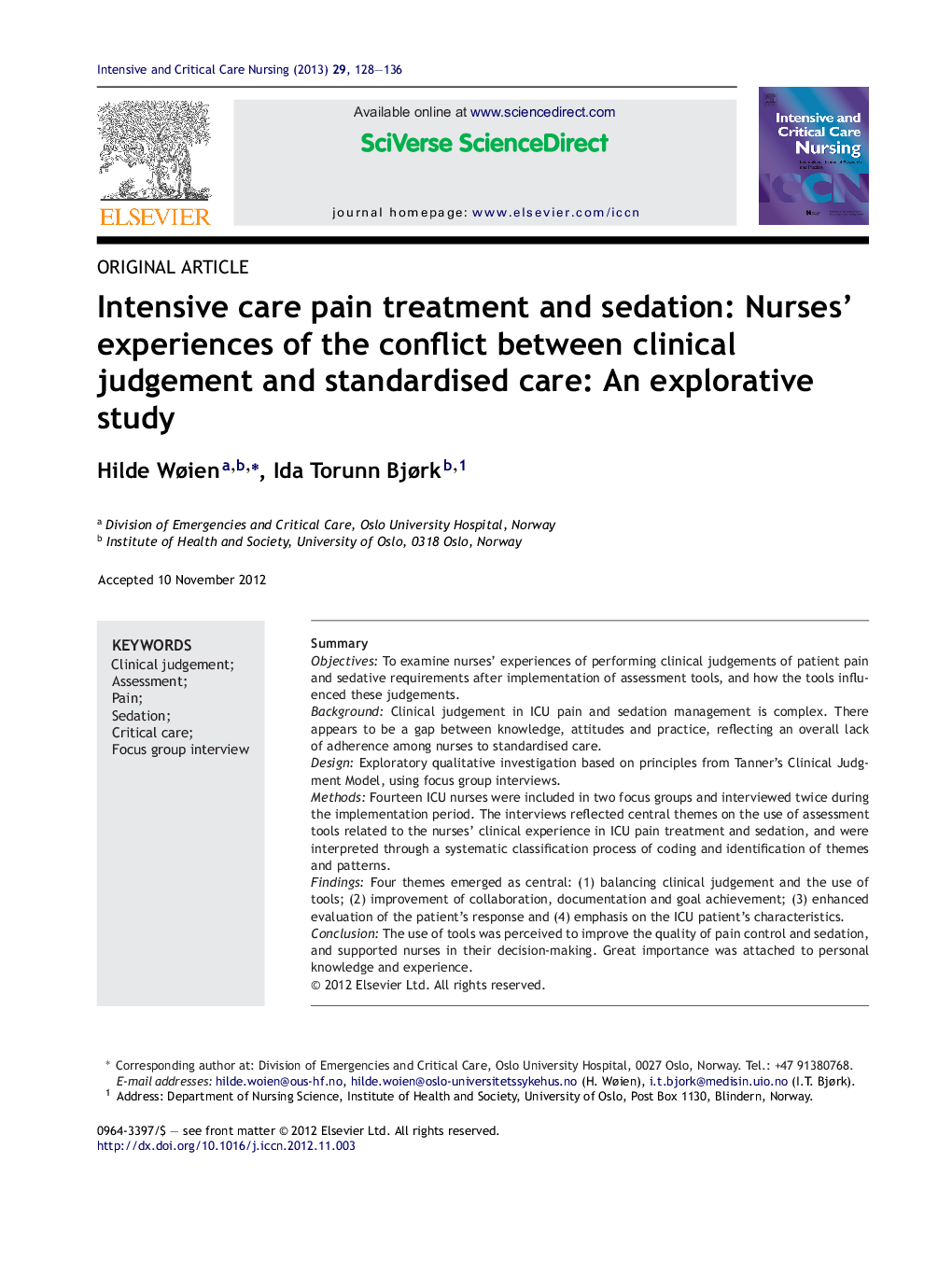| Article ID | Journal | Published Year | Pages | File Type |
|---|---|---|---|---|
| 2651989 | Intensive and Critical Care Nursing | 2013 | 9 Pages |
SummaryObjectivesTo examine nurses’ experiences of performing clinical judgements of patient pain and sedative requirements after implementation of assessment tools, and how the tools influenced these judgements.BackgroundClinical judgement in ICU pain and sedation management is complex. There appears to be a gap between knowledge, attitudes and practice, reflecting an overall lack of adherence among nurses to standardised care.DesignExploratory qualitative investigation based on principles from Tanner's Clinical Judgment Model, using focus group interviews.MethodsFourteen ICU nurses were included in two focus groups and interviewed twice during the implementation period. The interviews reflected central themes on the use of assessment tools related to the nurses’ clinical experience in ICU pain treatment and sedation, and were interpreted through a systematic classification process of coding and identification of themes and patterns.FindingsFour themes emerged as central: (1) balancing clinical judgement and the use of tools; (2) improvement of collaboration, documentation and goal achievement; (3) enhanced evaluation of the patient's response and (4) emphasis on the ICU patient's characteristics.ConclusionThe use of tools was perceived to improve the quality of pain control and sedation, and supported nurses in their decision-making. Great importance was attached to personal knowledge and experience.
